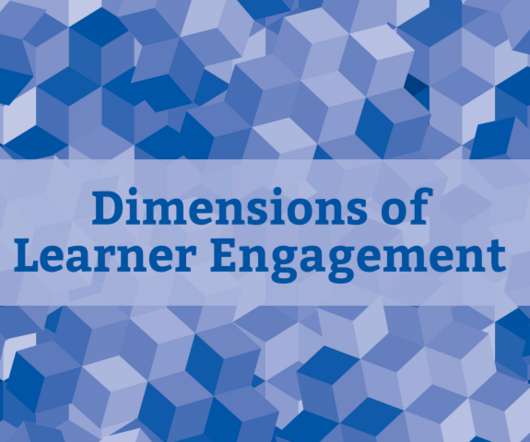Learner Engagement: Behavioral, Cognitive, & Affective
Experiencing eLearning
DECEMBER 17, 2019
However, we can also support the cognitive and affective dimensions of engagement. I adapted this from a coding scheme developed by Baker et al (2004), as cited in Baker et al (2010). Cognitive engagement. Cognitive engagement can be defined as “mental effort and thinking strategies.” Behavioral engagement.







































Let's personalize your content